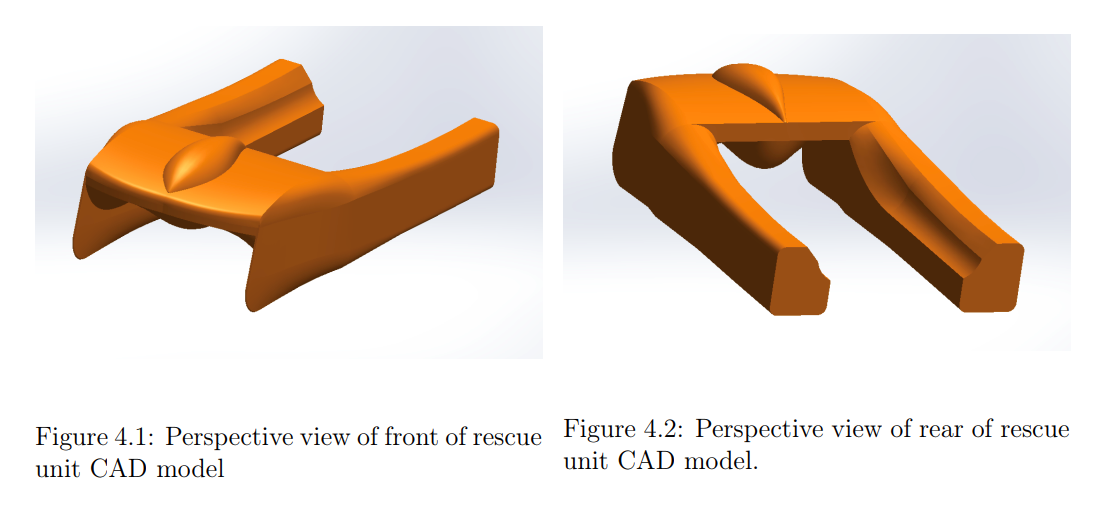Marine AI joins Ocean Autonomy Cluster
Ocean Autonomy Cluster strengthens its global network of maritime autonomy leaders with the...
Autonomous safety technology aims to reduce maritime drownings: Meet Maritime Guardian and the Njord system.
Maritime Guardian is developing a breakthrough autonomous safety system designed to save lives at sea and to bring maritime emergency response into the autonomous era.
With its flagship technology Njord, the company aims to drastically reduce man-overboard fatalities by automating detection, alerting and rescue operations.
.jpg?width=6000&height=4000&name=Maritime%20Guardian%20Foto%20Lars%20Bugge%20Aarset%20Fremtidens%20Industri%20(76).jpg) CEO Kim-Ruben Våge and CTO Jon Kristian Vinge Anzjøn. Photo: Lars Bugge Aarset/Fremtidens Industri
CEO Kim-Ruben Våge and CTO Jon Kristian Vinge Anzjøn. Photo: Lars Bugge Aarset/Fremtidens Industri
“Less lives lost at sea” is the company's mission, rooted in co-founder Kim-Ruben Våge’s own experiences. Having lived the everyday reality of a seafarer, he has felt both the cold and the immense forces of the ocean, and the constant risk that follows.
Våge began his career as a fisherman on small vessels and trawlers, and twice he came close to drowning.
“It’s an incredibly uncomfortable feeling,” he recalls.
These experiences, combined with later service in the Armed Forces and roles in logistics, public administration and IT, sparked the idea for an autonomous rescue system.
Today, Maritime Guardian is based at Skatval, with Våge and CTO & co-founder Jon Kristian Vinge Anzjøn leading development together with design partner Inventas, also an OAC member. The company is currently in pre-sales and expects commercial launch in 2026...jpg?width=3024&height=2268&name=Maritime%20Guardian%20Kvale%20(2).jpg) Kim-Ruben Våge presenting Njord and Maritime Guardian at Kvale Seafood Week in Bodø.
Kim-Ruben Våge presenting Njord and Maritime Guardian at Kvale Seafood Week in Bodø.
Njord is built to respond in the critical minutes after an accident at sea. The system combines smart sensors, vessel connectivity and autonomous rescue devices:
Personal sensor – a small-sized device worn on the body
Hub onboard – connects to vessel systems and shore emergency services
Autonomous rescue unit – deployed to recover the person in the water

The system is designed to automatically detect man-overboard situations and other unsafe conditions, and to send immediate alerts to crew and emergency services through established communication channels. It operates both at close range and over long distances, ensuring continuous connectivity and rapid notification regardless of location.
Maritime Guardian has also entered into an agreement with AKVA group, Helgeland Plast, for development.
Both maritime industry stakeholders and Norway’s Accident Investigation Board have recommended that such systems be adopted by the maritime sector. The product’s dual-use potential also positions it for applications in defense, where autonomous logistics and emergency response are rapidly advancing.
Primary target industries include fisheries and aquaculture, followed by ports and eventually offshore energy.
 Kim-Ruben Våge pitching at Trykktanken. Photo: Simon Almås
Kim-Ruben Våge pitching at Trykktanken. Photo: Simon Almås
Maritime Guardian came out on top in "Trykktanken" (The Steam Tank), an intensive 4–5 week accelerator program run by by CoFounder, Kunnskapsparken Helgeland and the ACT Cluster, where entrepreneurs work closely with a team of experts to refine their concept and business model. Through the program, the company developed a tailored development plan, a sharpened investor pitch, and a concrete roadmap for the next stages of growth.
In the final, they shared the stage with strong contributions, and the victory marks an important quality stamp for both the technology and the team behind it.
“This is something we are incredibly proud of,” says Kim-Ruben Våge.
 Tuva Okkenhaug, Co-Founder, Jøran Brede Busch, Kunnskapsparken Helgeland, Kim-Ruben Våge and Joachim Hjartøy, Kunnskapsparken Helgeland. Photo: Simon Almås
Tuva Okkenhaug, Co-Founder, Jøran Brede Busch, Kunnskapsparken Helgeland, Kim-Ruben Våge and Joachim Hjartøy, Kunnskapsparken Helgeland. Photo: Simon Almås
Maritime Guardian discovered Ocean Autonomy Cluster through the Defence Conference/Forsvarskonferansen in September.
The company sees the cluster as a strategic landing zone for cooperation, technology testing and knowledge-sharing.
“It’s not just about receiving value, we want to contribute,” says Våge. “Entrepreneurship can be lonely. OAC is a place to spar, innovate and lift each other.”
The company is also joining the FI Ocean Space Incubator, where it will receive support to accelerate technology development, communication, commercialization and strategic partnerships within the ocean innovation ecosystem.
“The opportunities in Testination, with the Trondheim Fjord as a testing arena, are also highly relevant for us,” says Våge.
The company is also collaborating with innovation ecosystems including KUPA, Norce, KPA and KPB, and will represent Norway at Enforce TAC as part of the national pavilion through NORDSEC.
.jpg?width=6000&height=4000&name=Maritime%20Guardian%20Foto%20Lars%20Bugge%20Aarset%20Fremtidens%20Industri%20(72).jpg) Ingrid Margrethe Sandnes, FI Ocean Autonomy Cluster, Kim-Ruben Våge and Jon Kristian Vinge Anzjøn, Maritime Guardian. Photo: Lars Bugge Aarset/Fremtidens Industri
Ingrid Margrethe Sandnes, FI Ocean Autonomy Cluster, Kim-Ruben Våge and Jon Kristian Vinge Anzjøn, Maritime Guardian. Photo: Lars Bugge Aarset/Fremtidens Industri
Ocean Autonomy Cluster strengthens its global network of maritime autonomy leaders with the...
Maritime Guardian has joined Ocean Autonomy Cluster, strengthening the cluster’s...
The innovation company Kadabra is the latest member to join Ocean Autonomy Cluster, aiming to...